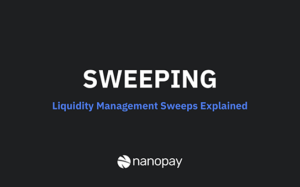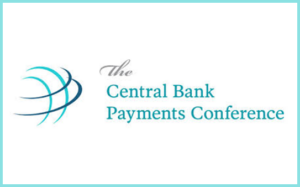‘Virtual account’ is the new shiny term in the world of treasury, which is currently undergoing a digital revolution. Virtual accounts are not a new concept, but they are receiving a lot of attention. However, much of the excitement has stemmed from the fact that there is a new type of virtual account solution in the market, often confused with its legacy predecessor, which is a simple solution for reconciling receivables. New virtual accounts (which exist within a Virtual Account Management platform), serve a different purpose within a cash and liquidity management solution, and are far more sophisticated than the original ‘virtual accounts’. More importantly, the new virtual accounts have the potential to unlock enormous amounts of trapped capital. Before delving into the details of this new solution, it is important to first clarify the difference between the original ‘virtual account’ and the new virtual account.
The original ‘virtual account’, while attractive, is also misleading. Appearing to a payer as a unique physical bank account, and to a payee (the corporation using the product) as a unique digital bank account, the original ‘virtual account’ is in fact, just a reference number. Each of the corporate’s customers receive a unique reference number to use for their payments. The solution then enables the corporate to segment each customer within a single physical account, rather than using many accounts to organize these receivables. This simple, but useful tactic can improve the reconciliation process and rationalize the number of physical bank accounts. In doing so, these ‘virtual accounts’ can reduce a corporate’s operating costs and bank fees.
When asked to compare original ‘virtual accounts’ to the new virtual accounts being developed, Ivy Luu, Director, Cash and Liquidity Management Solutions at nanopay Corporation, had this to say.
“The original ‘virtual accounts’ are quite beautiful in their simplicity, but they are fairly one-dimensional, in that their primary purpose is to help reconcile payables and receivables. Virtual Account Management (VAM) platforms, however, are powerful in their capabilities and truly transformational.”
The new, true virtual account does not replace the original ‘virtual account’, but instead tackles a far more challenging problem, global liquidity management. By creating a true, virtual representation of a physical bank account, this new solution allows corporate treasurers all the traditional tools, such as sweeping or pooling mechanisms. Plus, the new virtual account has the added benefit of existing within a greater Virtual Account Management platform, which transforms the virtual account into a truly revolutionary product.
Put simply, a VAM Platform is a self-service solution that enables corporate treasurers to create an ideal virtual global hierarchy and replace many physical bank accounts around the world with true virtual accounts. This works by creating a digital ecosystem with a customizable, digital infrastructure, that all leads back to one (or few) physical accounts. In doing so, the VAM platform centralizes control, provides a single view of global cash and liquidity holdings, and significantly increases operational efficiency.
“Rationalizing physical accounts and simplifying reconciliation are just the tip of the iceberg when discussing the many benefits reaped through VAM solutions. They help corporates create, manage and monitor virtual accounts better than ever before, as treasurers are able to self-create global hierarchical structures that best fit the needs of the business. Furthermore, it is a sophisticated cash and liquidity solution that has customizable thresholds for sweeping such as ZBA (zero balance account), TBA (target balance account) or pooling mechanisms. VAM platforms can even track, report and settle intercompany loan transactions.”
Currently, the use of multiple disjointed legacy systems and batch processing, caused by rigid banking infrastructures, creates a cumbersome payment process, causing issues in traceability and reconciliation of transactions. Combined with opaque FX rates, corporate treasurers never have a truly accurate view of the company’s cash position. Under this current arrangement, treasurers must use buffers to ensure they never over-expose a business unit.
The same way astronomers observing the night sky must always make hypotheses based on a picture of the past, treasurers are forced to make decisions based on old snapshots of the company ledger. VAM platforms are the solution that will allow treasurers to make real-time decisions based on real-time data. Because of this, VAM platforms may one day be viewed as a turning point in treasury’s transformation back to a key strategic stakeholder.
A special thanks goes out to Ivy Luu, Director, Cash and Liquidity Management Solutions at nanopay Corporation, for helping me research, write, and edit this article.





